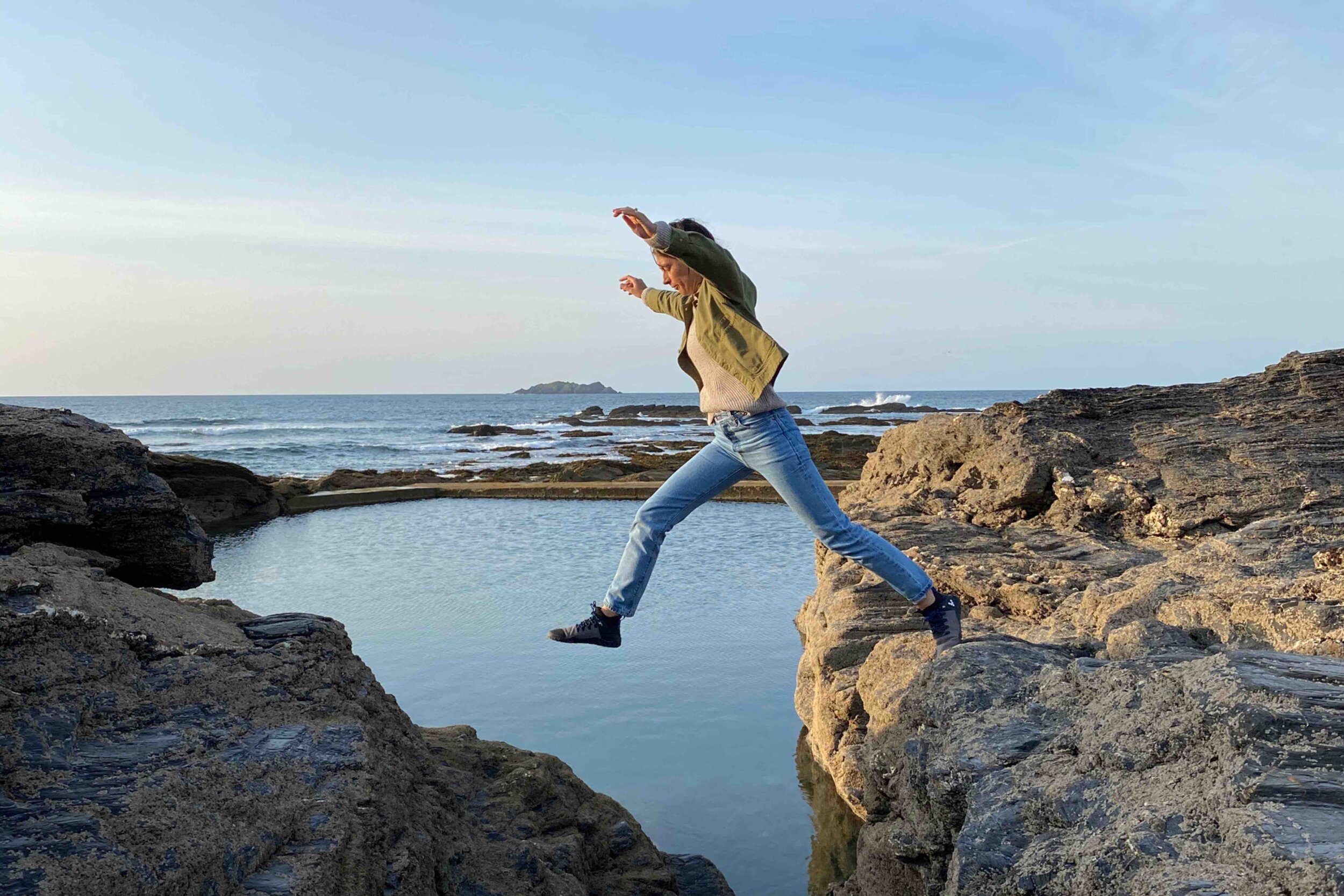Why I Swim at Sunrise with Grace Kingswell
In this blog, Cornwall based nutritional therapist and cold water swimmer Grace Kingswell tells us how spending time outdoors has a positive impact on human health. Grace explains the science behind light exposure and why sunrise is her favourite time to swim.
Words by Grace Kingswell
As the ‘easing out’ of lockdown has begun, it got me thinking a lot about the detrimental effects that the added time indoors has had on us all. And, with a few more weeks (being optimistic...it’s definitely months) ahead of us I thought it might be nice to explore this idea of light and light therapy in relation to swimming.
I’ve only lived in Cornwall for 8 months or so, we managed to move here during the first lockdown of 2020, and so prior to that I got my cold-water swim fix at the Hampstead ponds in London. I founded a swim community called Nudge based around the idea that everyone needs a little nudge to get outside in the morning, plunge into some icy water, and, more than that, to do it at sunrise - which often means a very early start!
You see, humans have evolved over centuries to live in harmony with the sun and actually the sun does so much more for our physiology that simply signal when we should wake up and when we should go to sleep. As humans we have more than one energy source, the obvious one being food, but light and the energy that comes from the sun is another one that’s hugely overlooked in western medicine.
Inside each of our cells (and absolutely everything in our bodies is made up of cells), we have mitochondria - the powerhouse of the cell that creates cellular energy in the form of ATP. ATP then gets used to power all the thousands of processes that happen in our bodies day-to-day. Glucose is one fuel source, but our mitochondria respond to light too - so more daylight equals more energy.
Grace moved to Cornwall with her husband Nick during the first lockdown
Not only that, but hormone production, detox, digestion, sleep cycles, immune responses and so much more are also reliant on light signals - some of these processes happen in the hours of darkness (detoxification, for example, happens at night while we’re asleep), whereas some of them slow down at night and speed up when our bodies get those light cues to tell us it’s daytime - digestion, for example.
The reason lockdown has been so tough on so many of us is because our time in nature has been greatly reduced. Here in Cornwall we are incredibly lucky to have nature on our doorstep and we need to be making the most of it to help support us through this turbulent time. I won’t go into the ways in which vitamin D supports and protects our immune system, but just know that it is of paramount importance too!
So why sunrise in particular?
The bottom line is this: as much daylight at any time of the day is great. However, I also make an effort to try and see a sunrise as often as I can too.
Light is split up into a spectrum of different wavelengths. You will have heard of blue light - the subject of a huge interest right now as everyone puts on their blue-blocking glasses, dims the brightness on their phone screen and avoids overhead lights in a bid to improve their sleep quality.
Well, in the same way that blue light wakes us up and affects our circadian sleep cycle, red light (such as we get from sunrise and sunset - red sky at night etc) also acts upon the mitochondria in our cells, but its sphere of influence also stretches to inflammation and pain relief in the body, among many other things, and not just energy production.
Grace explains that light exposure impacts the body on a cellular level
This is because the red and infrared wavelengths can penetrate much deeper into the skin, reaching the hypodermis (for example wavelength of 694nm can penetrate 15mm into the body). It is this deeper penetration that allows the benefits to be so far reaching as the deeper cells are impacted, photons can enter the bloodstream and be passed throughout your body as well.
What are the benefits of red light?
In the case of red light specifically, the benefits are incredibly positive and range from: more energy, decreased inflammation, a boost in collagen synthesis, faster muscle recovery and reduced joint pain. Because red light works on the mitochondria at the cellular level to increase cellular energy, it means that all manner of healing that needs to happen in the body (whether that’s neurological, pain related, inflammation related, circadian rhythm dysregulation for increased deep sleep), also happens faster too as all these processes require energy. More ATP and healthier mitochondria = better health generally.
You can simulate this red light effect with a red light device (my fave is from Red Light Rising and you can get a small discount with the code GKNUTRITION)
We know that cold-water is incredibly beneficial for mind and body, and seeing a sunrise is the same: uplifting for the soul and calming and soothing for our physiology. So why not message your swim mates and give each other the little ‘Nudge’ that you need to go get out there first thing?
--
If you enjoyed this article then there’s plenty more where that came from on my Patreon page. Simply google Grace Kingswell Patreon or follow this link.
If you enjoyed this blog, why not sign up to our newsletter?
If you know someone else who would enjoy it, please share it with them via email or social media.



